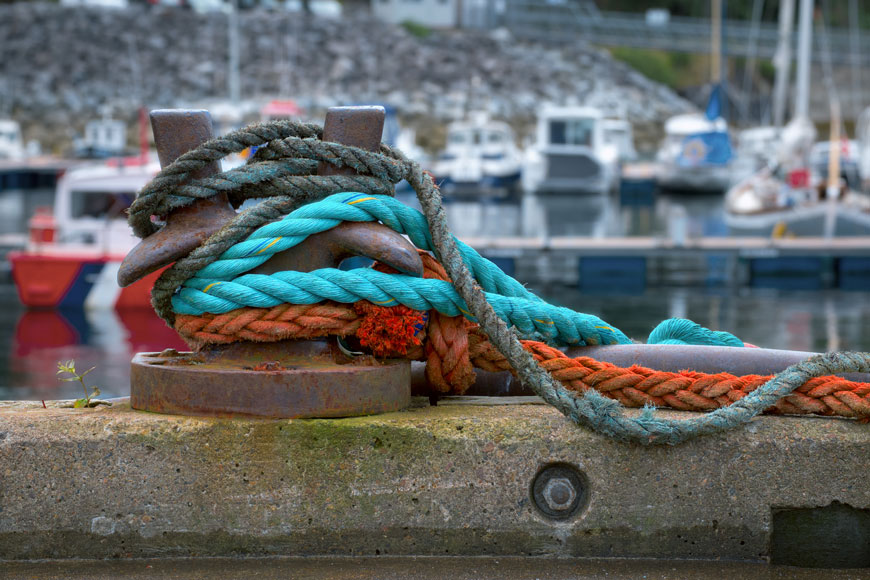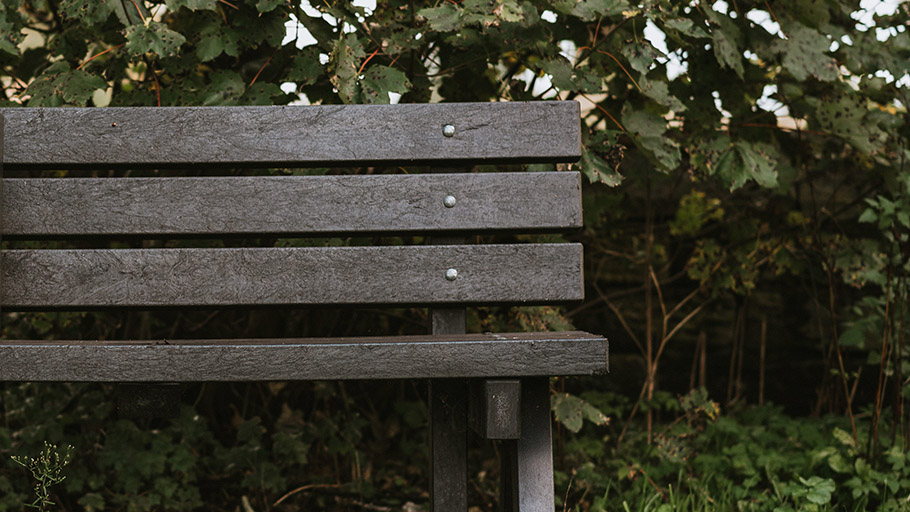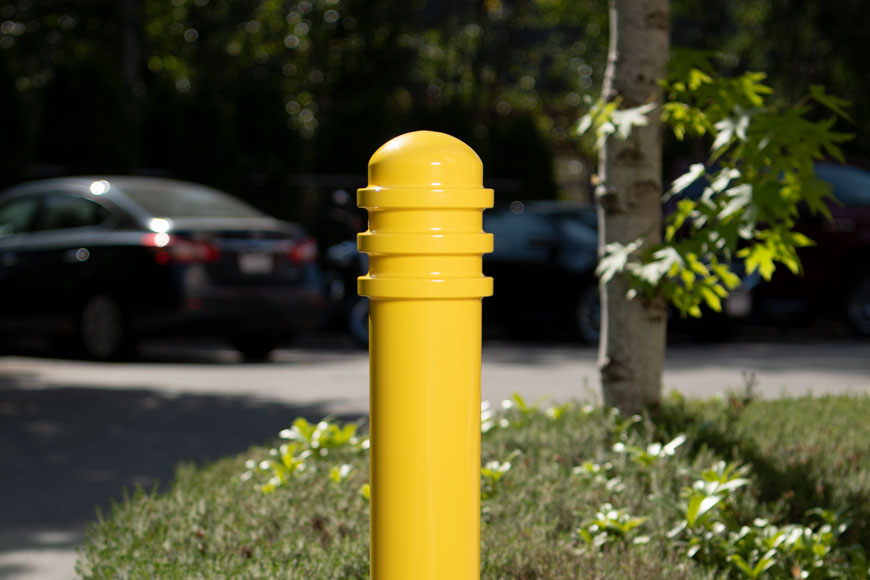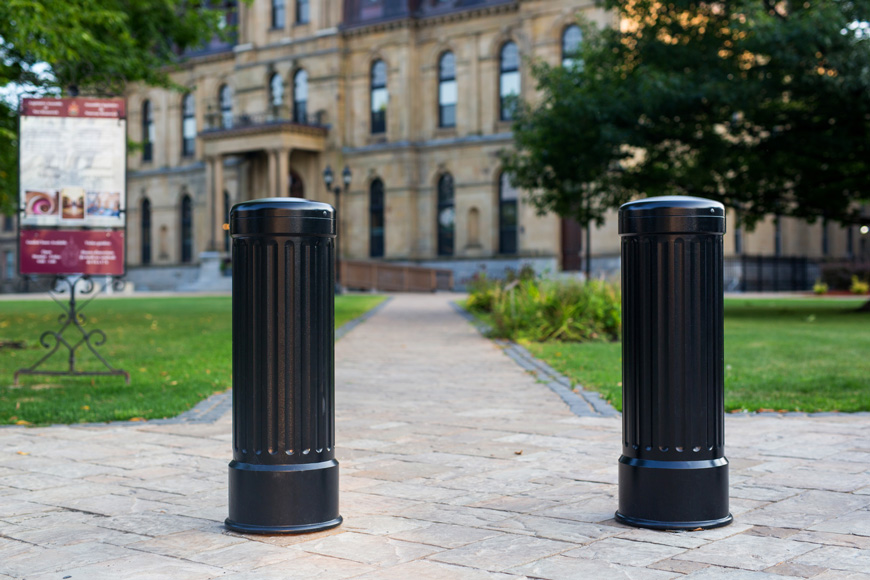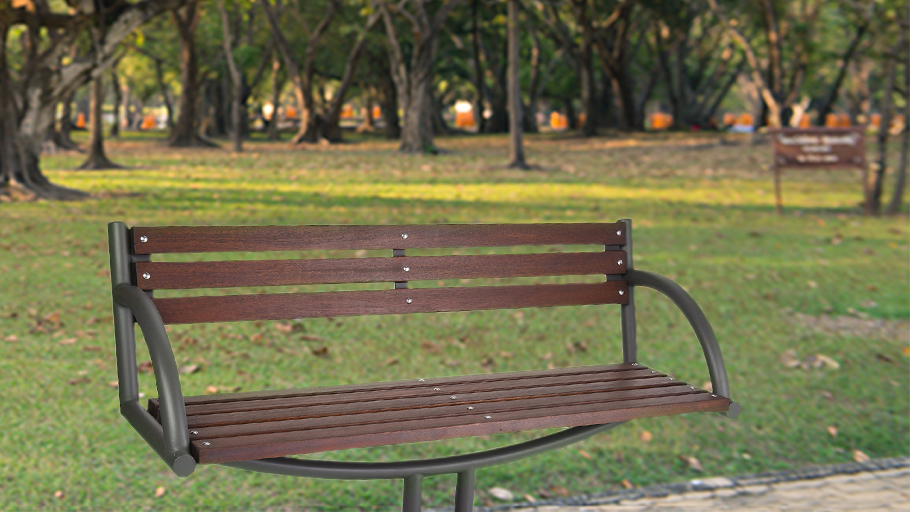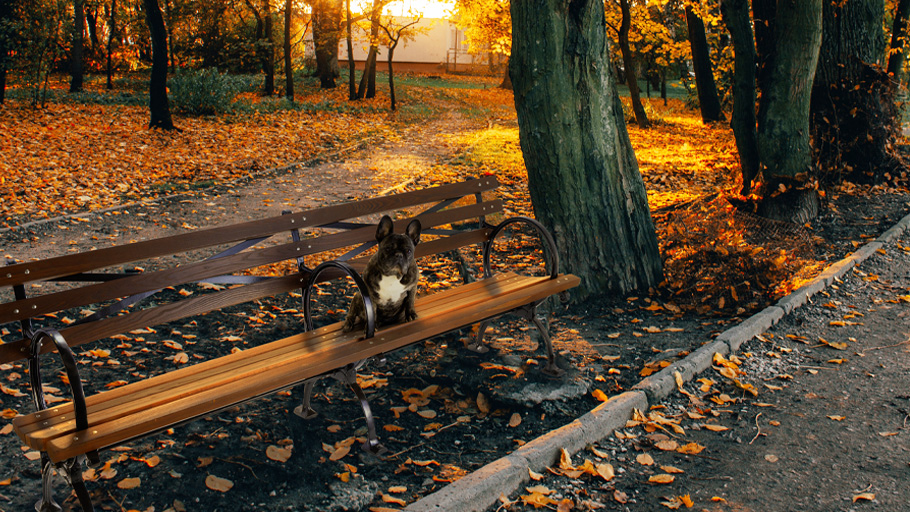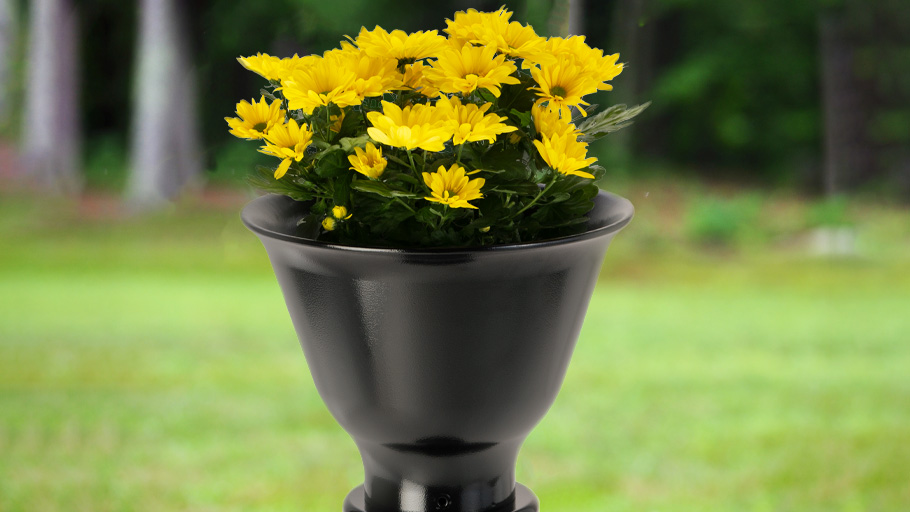Design details in the concrete jungle
- What is hardscape?
- Hardscaping at home—making yards into oases
- Urban hardscape—building the concrete jungle
- Hardscape vs. site furniture—social spaces and placemaking
- Rewilding cities
- Metal hardscape
- Hardscape design

What is hardscape?
Hardscape is the term for hard landscaping materials. Concrete, asphalt, stone, glass, brick, metal, and gravel are all hardscape. In general use, hardscape means materials placed by human design. Hardscape contrasts with soft materials like vegetation and soil, which are known as “softscape”. Together, hardscape and softscape make up the landscape.
Examples of hardscape include:
- walkways
- roadways
- pools
- lined water features
- patios
- retaining walls
- gravel drainage areas
Hardscaping at home—making yards into oases
Traditionally, the term “hardscape” is most used by landscape architects and residential contractors who are adding pavers, retaining walls, decks, and driveways to the grounds of a building. Greenspace is often the prizewinning aspect of these designs: the flower garden, the placement of trees, giving the space its shape.
Yet hardscape provides both structural support and a complementing frame. It may sometimes be the less-noted aspect of the landscape architect’s work, but the type and placement of hardscape is vital for managing water, erosion, light, space, and safety.
Materials can be chosen to fade into the background or to provide visual interest. Smooth granite, cast iron trench drains, wrought gates, decorative pavers, simple brickwork, or mosaic tiled stones: small design choices can lead to very different aesthetics, even when the garden elements stay the same.
Urban hardscape—building the concrete jungle
In cities, concrete, tempered glass, and steel dominate the street. These have been the materials of the urban environment since the Industrial Revolution. The mechanical properties and structural stability of concrete and rebar make modern cities possible. Skyscrapers, utilities, and roads rely on their strength. Yet the concrete jungle has a reputation of being a sometimes hostile place to live and families often move to the suburbs for a slice of yard.
In our current age, challenged by population and climate, urban planners and architects have begun to re-evaluate hardscape design. What makes excellent human habitat? Social space, beauty, plants, and amenities. Can cities use the structure and function of hardscape while offering plentiful green spaces, a canopy of trees, and the rustling of wildlife? What if the approach to hardscape on downtown streets were more like traditional hardscaping in suburban backyards?
Hardscape vs. site furniture—social spaces and placemaking
Occasionally people include items like gazebos, benches, and planters into their definition of supplied hardscape. Others consider this site furniture. The distinction is slippery because a lot of site furniture in public space is bolted or embedded into the concrete, growing out of it as a permanent feature.
However, hardscape is generally functional infrastructure than manages the flow of people, things, information, or water. Site furniture is an attractive feature in a single spot.
French speakers know buildings as immeubles and furniture as meubles—unmovables and movables, respectively. Hardscape is the unmoving frame. Site furniture may be bolted, but it is easily moved, installed as an amenity for those in an area.
Site furniture, like hardscape, is an important element of outdoor design that should not be overlooked. Like comfy outdoor furniture in the backyard, a city’s site furniture promotes a social landscape.
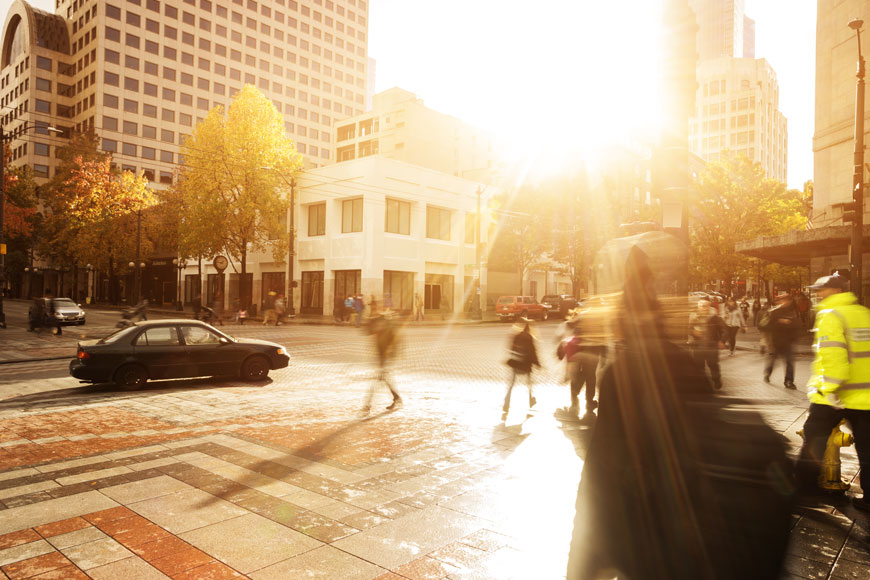
Rewilding cities
There’s a growing public appetite for urban greenspace. Since 2016, Google has seen a rise in people searching “forest bathing,” the practice of connecting with nature. Outdoor elementary schools, said to combat nature deficit disorder, have been popping throughout North America for the past two decades.
Good research underpins this trend. Mounting evidence shows that green urban spaces relieve stress and make for positive changes in cardiovascular health. On a warming planet, trees provide carbon capture. Green roofs and trees clean and cool the air, fighting urban heat sink and scrubbing particulate matter. Trees protect biodiversity, manage rainwater, provide shade, and absorb noise. Property values are improved under a thick green canopy. People prefer walking on tree lined streets—and increasing neighborhood walk appeal means increasing opportunity for local businesses. Trees and their economic, social, and physical benefits are so popular they’ve given rise to a hashtag on urbanist twitter: #StreetsAreBetterWithTrees.
Urban ecologists who work to return nature to cities are considering how the hardscape in cities echoes natural landscape. By watching wildlife in natural structures, urban ecologists are coming up with strategies to help a greater diversity of nature settle in cities. This can mean adding green, but it also means tweaking the hardscape to be more inviting, so nature can find its own way.
In Britain, stony-field refugia on the tops of buildings are bringing back the black redstart bird. Similarly, green roofs, connected green space and wildlife corridors, butterfly- and bee-supporting planters, and bat boxes are modern landscape features that invite natural elements to make their way into the city.
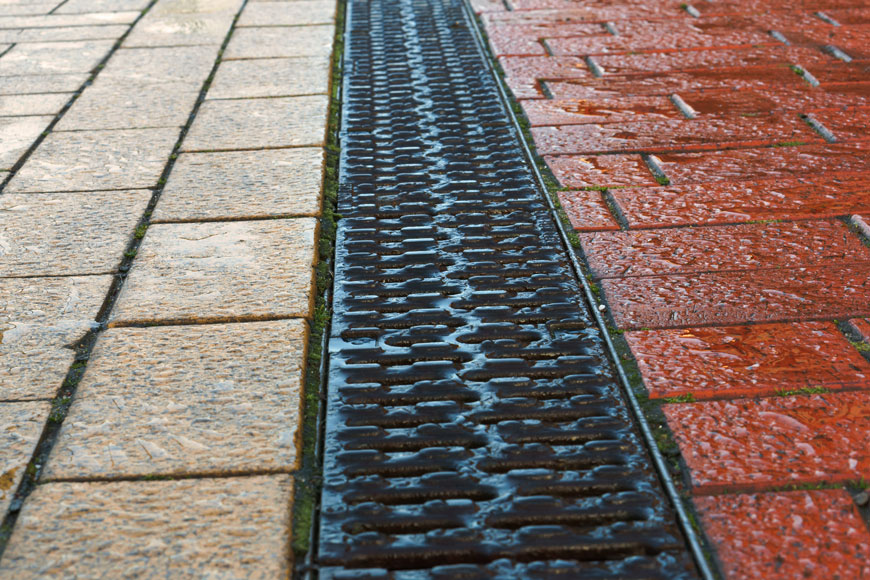
Metal hardscape
Concrete, asphalt, and glass are the most common visible hardscape elements. Yet many of the functional pieces of hardware in the built environment are made of iron, steel, or aluminum. Sometimes, bringing nature back into cities means changing where this functional hardscape is placed.
Mostly at grade, and often invisible, the urban floor is covered in tree grates, water-clearing trench drains, stormwater grates, detectable warning plates, manhole covers, bollards, lids, downspouts, and frames. Urban ecologists are viewing these elements in new ways to support sustainable design.
Water management and diversion—trenches and stormwater grates
Water management is one of the most important elements of a city’s hardscape-prominent construction. Cities are covered in water-impervious surfaces. Where natural landscapes usually experience 10% runoff, urban landscapes must manage 55% runoff. Municipalities must actively manage storm water to prevent flooding through the concrete heart of the city.
Further, the city’s runoff does not infiltrate deep into the soil to replenish the groundwater. It is often polluted after washing over buildings, roads, and sidewalks. It enters the sewer system filled with debris, pesticides, insecticides, and particulate. Often, this water is diverted to sewage treatment or emptied into natural waterways.
The capillaries of this water management system are carved and contained by hardscape. From the tops of buildings, eves and downspouts collect water and bring it to grade. On the surface, small trenches collect and direct water to larger sewer systems, like streams feeding a river. Each trench grate and sewer grate makes the hardscape more water-permeable. The placement of these items determines how water moves through the city. As cities invite nature back, it’s important to consider how these artificial waterways affect the water table and water cycle.
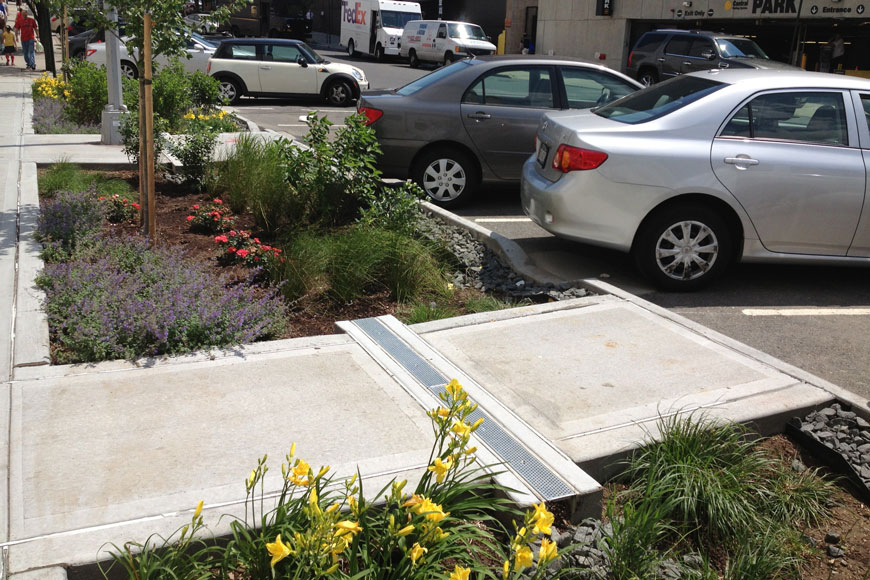
One sustainable strategy is to install bioswales, or rain-gardens, which collect water into living areas. Plants and strata of soil and gravel beneath them do the work of filtration, recharging the groundwater. These bioswales are often fed by trenches that once would have drained into the sewer system. A change in the organic profile of the city is supported by a change in the position and intention of the hardscape waterways.
Bioswales are best for non-pedestrian areas: too many feet walking through them will compact the soil and make them less effective. In some environments, however, the movement of people and traffic remains important. In these situations, long stretches of sidewalk can be replaced with a tree grate array. It is walkable, but permeable. The soil below grade can be dug on angles to help run off drain into tree roots or bioswale. This change allows for greater run-off capture while preserving walkability. Since a trench offers only a small surface area, these tree grate arrays also offer water capture over greater space.
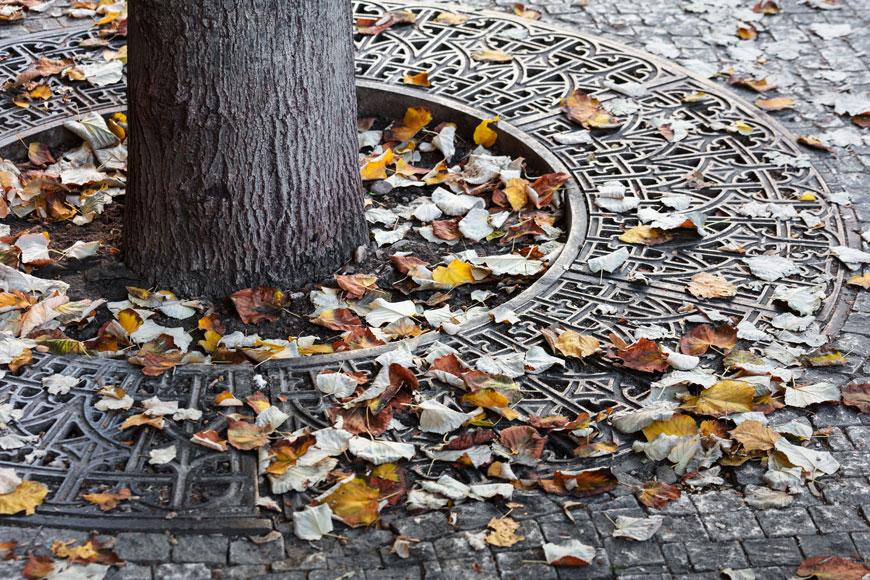
Streets are better with trees—and tree grates
One of the issues affecting trees and other plants within a city is the stress of the city itself. Human stress is lowered among trees, but the same cannot be said for trees in the city scape. Some trees are healthy enough when used as lonely sentinels on either side of a boulevard, but some will struggle and fail. Light, water, and soil are all challenges in a city. Impervious surfaces mean less water in the soil. Skyscrapers block the sun and keep trees in shadow for much of the day. Soils are not fed by rotting leaves and trees as they would be in a forest. On a busy downtown sidewalk, hundreds of footsteps over soil compact it until it is as hard and dense as cement.
With these issues, tree grates are not just nice-to-haves. For the health of trees, they are often a must-have. The hardscape must shift from solid concrete to permeable grating in order to support and protect the tree’s root system. How large the grate must be to allow the right amount of nutrients and water is dependent on location, climate, and tree varietal.
Other infrastructure support
Hardscape can be used to support natural elements. It is also there to ease people’s daily lives. A uniform environment supports those with accessibility issues: good streetscape design will stay predictable and regular.
Grates and grills should not impede or trip people with mobility issues. Hardscape provides stable ground to pedestrians, and an even surface to those using scooters, walkers, and wheelchairs. Detectable warning plates, sometimes known as tactical ground surface indicators, are bumps or strips that warn those who are vision impaired that there is a hazard coming up, such as a curb or intersection. Designs incorporating tactical indicators can warn against changing surfaces, like hardscape to soil.
Crash-ready bollards, walls, fences, and site furnishings provide security against vehicle impact. Low-impact versions define perimeters and guide traffic. These types of site furnishings and hardscape options may also be used to protect trees, bioswales, plantings, ponds, and animal habitat.
Hardscape design
Hardscape is the material of building. With hardscape, we create transportation networks, utilities networks, and shelter. We can make hardscape sculptural (concrete bollards, for example) or decorative (stylish trench drains) as well as functional, but it is function that has made these solid materials so ubiquitous.
The ubiquity of these building materials gives us room to reconsider how we use them. The world’s population is increasingly urban. Cities have traditionally been more hard-material than organic. Yet sustainability requires us to rethink the ways urban places use resources. We’ve seen that bringing nature into the cities is good for both human happiness and long-term urban stability.
To make these changes, the components of the urban landscape should be considered as parts of an ecosystem. Big changes can sometimes come from small things. What can designers and planners do to create sustainable, accessible cities that foster community engagement and economic success? A new vision of urban ecology is arising, and small local hardscape changes, made many times over, can make a big impact.


